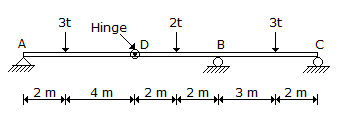Directions to Solve In each question below is given a statement followed by two assumptions numbered I and II. You have to consider the statement and the following assumptions and decide which of the assumptions is implicit in the statement. Give answer
A Only assumption II is implicit
B
Either I or II is implicit
C
Neither I nor II is implicit
D
Both I and II are implicit
E
Only assumption I is implicit
Share : |
A Using this in this program is necessary to properly set the values in the object. B The call to SetData() is wrong since we have not explicitly passed the this reference to it.
C The code will not compile since we cannot explicitly use this. D The definition of SetData() is wrong since we have not explicitly collected the this reference. E Contents of this will be different during each call to SetData(). Share : |
A
on the poles.
B
on equator
C
on 30° latitude
D
on 45° latitude
E
on 60° latitude
Share : |
A
5.8 t
B
0.2 t
C
3.5 t.
D
2 t
Share : |
A
monopole
B
loops
C
helical
D lens
Share : |
A Magnetic disk
B Punched paper tape
C Punched card
D None of the above
E Touch pad
Share : |
A Hydrocyclones
B Thickeners
C Decanters
D Classifiers
Share : |
A India
B Chinese Taipei
C South Korea
D Indonesia
Share : |
A Shivpal Singh
B Annu Rani
C Elizabeth Davenport
D Neeraj Chopra
Share : |
A Archery
B Badminton
C Squash
D Tennis
Share : |





